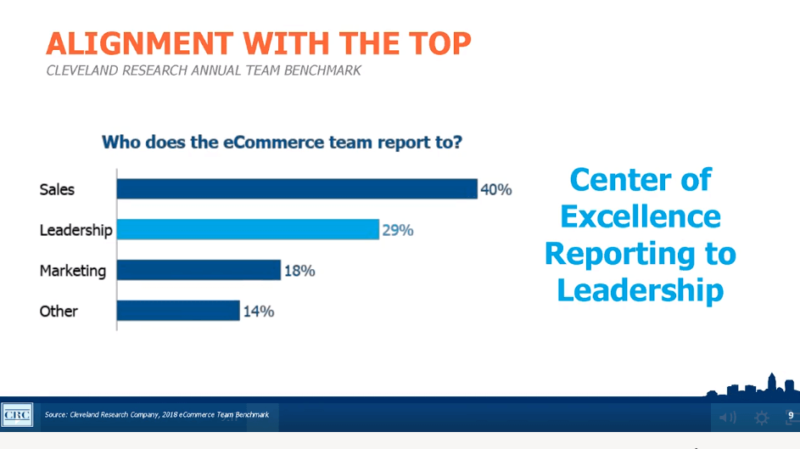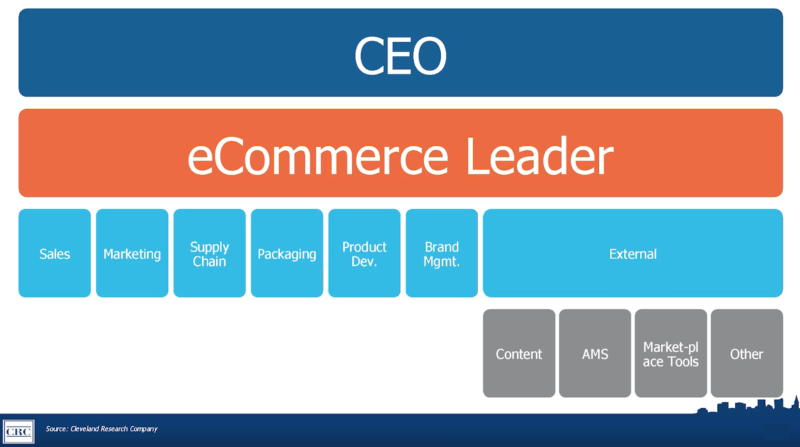Looking to grow into a C-level leadership role? Focus on ecommerce.
Contributor Andrew Waber suggests marketers looking for a senior leadership role should address the gaps and opportunities present in their ecommerce practice as a way to stand out.
 Roles like the Chief Marketing Officer (CMO) and Chief Digital Officer (CDO) are growing increasingly interlinked, as are market disruptions of direct-to-consumer (D2C) and digital-first brands across a wide array of industries.
Roles like the Chief Marketing Officer (CMO) and Chief Digital Officer (CDO) are growing increasingly interlinked, as are market disruptions of direct-to-consumer (D2C) and digital-first brands across a wide array of industries.
Successful brands and their marketing teams recognize the growth and long-term importance of ecommerce and are prioritizing roles and activities that will get them out ahead of competitors. For marketers looking to grow into C-level leadership roles at their companies, there is a real opportunity to do so by placing focus on ecommerce responsibilities associated with data analysis and the authority to report directly to leadership.
Russ Dieringer, the executive director at Cleveland Research, recently spoke at a Boston-area event and shared some eye-opening findings based on his firm’s research surveying 144 companies.
Amongst the ecommerce teams Cleveland Research surveyed:
- 40 percent report to sales.
- 29 percent report to leadership.
- 18 percent report to marketing.
- 14 percent report to another department.

Russ emphasized the idea that ecommerce teams reporting to leadership are most effective. Ecommerce success is a moving target that requires the ability to move quickly when it comes to addressing inefficiencies and capitalizing on advantages.
Of the 85 percent of companies surveyed, most had a mid-to-senior-level executive leading ecommerce for their organizations. By having a direct line to leadership, ecommerce teams and the marketers on them can get the necessary buy-in on key initiatives so they can take action. This is critical.

With growing product content and promotional needs, the marketing side of ecommerce now encompasses an increasingly wide array of business functions. Misalignment between these parties can be devastating.
A social media advertisement driving traffic to an Amazon product page can be a great way to boost sales, but if that product goes out of stock during the promotion and visits continue, the organic search rank of that product is significantly harmed for months afterward.
Similarly, Amazon Marketing Services (AMS) ads are utilized by 70 percent of brands, according to Cleveland Research’s survey. But as more money flows into these ad products, cost per click (CPC) naturally rises, and return on advertising spending (ROAS) grows more challenging, requiring more creativity, testing and marketing savvy.
There needs to be a close working relationship between ecommerce, brand marketing and external resource teams to mitigate potential negative knock-on effects. Only 16 percent of companies surveyed had this kind of collaborative organizational structure, so getting your business ahead here can provide a competitive advantage.

Consider at least leading regular meetings on a weekly or biweekly basis between ecommerce and brand marketing teams to get the ball rolling initially.
Personnel perspectives
Aside from these cross-departmental alignment needs, brands looking to win on ecommerce channels are simultaneously dealing with major needs from a personnel perspective. Data analysts who can manage functions integral to ecommerce decision-making, such as page performance tracking or testing, are in incredibly high demand.
Cleveland Research reports 47 percent of companies surveyed said they are planning to hire data analysis personnel in 2018. That figure was 12 percent higher than the next highest job function. As ecommerce-oriented marketers work to bring in this outside expertise, they should also broaden their own knowledge on the data analysis front, at least at a high level, in order to be more effective leaders within their organizations.
To close
Marketers embedded within the ecommerce practice at their companies are facing problems very similar to what the modern CEO is facing in their day-to-day work: managing disruptive change and working intelligently in order to manage it and beat out competitors.
For marketers looking to put themselves in a position for a senior leadership role, actively working to address the gaps and opportunities present within their organization’s ecommerce practice is the best path to the proverbial corner office.
Contributing authors are invited to create content for MarTech and are chosen for their expertise and contribution to the martech community. Our contributors work under the oversight of the editorial staff and contributions are checked for quality and relevance to our readers. MarTech is owned by Semrush. Contributor was not asked to make any direct or indirect mentions of Semrush. The opinions they express are their own.
Related stories
New on MarTech